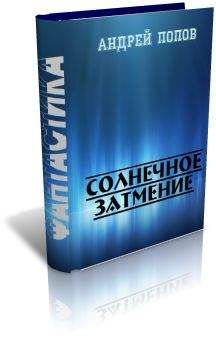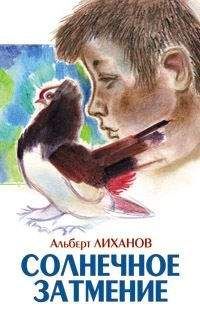Герхард Хазел - Постигая живое слово Божие
57 Cм.: K. Aland, M. Black, B. M. Metzger, A. Wikgren, C. Martini, eds., The Greek New Testament, 2d ed. (New York: American Bible Society, 1968), p. 324.
58 Ibid., and E Nestle K. Aland, eds., Novum Testamentum Graece, 25th ed. (Stuttgart: Wurtembergische Bibelanstalt, 1963), p. 232.
59 Этот вариант отражен в стандартных изданиях греческого Нового Завета и в большинстве английских переводов.
60 G. D. Fee, «The Textual Criticism of the New Testament,» in Biblical Criticism: Historical, Literary and Textual, eds. R. K. Harrison et al. (Grand Rapids, Mich.: Zondervan, 1978), pp. 152, 153.
61 R. E. Brown, The Gospel According to John I-XII (Garden City, N. Y.: Doubleday; Company, Inc., 1966), p. 57.
62 Westcott and Hort, The New Testament in the Original Greek, Appendix, pp. 28 — 51; B. H. Streeter, The Four Gospels (New York: Macmillan and Co., Limited, 1924), pp. 333 — 360; B. B. Warfield, An Introduction to the Textual Criticism of the New Testament (London: Hodder and Stoughton, 1886), pp. 199 — 204; C. S. Williams, Alterations to the Text of the Synoptic Gospels and Acts (Oxford: Basil Blackwell, 1951), pp. 40 — 44; R. G. Bratcher and E. A. Nida, A Translator’s Handbook on the Gospel of Mark (Leiden: E. J. Brill, 1961), pp. 517 — 522; W. F. Farmer, The Last Twelve Verses of Mark (London/New York: Cambridge University Press, 1974), pp. 1 — 124.
63 Bratcher and Nida, A Translator’s Handbook on the Gospel of Mark, p. 517.
64 Aland et al., The Greek New Testament, p. 196.
65 В оригинале нет.
66 So Westcott and Hort, The New Testament in the Original Greek, Appendix, p. 46; V. Taylor, The Gospel According to St. Mark (London: Macmillan and Co., Limited, 1953), p. 610; etc.
67 C. E. B. Cranfield, The Gospel According to St. Mark (Cambrige: At the University Press, 1963), p. 472.
68 Farmer, The Last Twelve Verses in Mark, pp. 1 — 87.
69 Ibid., pp. 88ff.
70 L. A. Weigle, «English Versions since 1611,» in The Cambridge History of the Bible, ed. S. L. Greenslade (Cambridge: At the University Press, 1963) 1:361.
71 См. очень полезную книгу: S. Kubo and W. Specht, So Many Versions? Twentieth Century English Versions of the Bible (Grand Rapids, Mich.: Zondervan, 1975).
72 Ibid., p. 190.
73 См., например: R. C. Bowman, «The Living Bible: A Critique, Brethren Life and Thought 18 (1973):137 — 144.
74 См.: E. A. Nida and C. R. Taber, The Theory and Practice of Translation (Leiden: E. J. Brill, 1969).
75 См.: Ibid., p. 33.
76 Preface to T. E. V.
77 Weigle, «English Versions Since 1611, p. 377.
78 Kubo and Specht, So Many Versions? p. 125.
79 Ibid., p. 127.
80 J. Barr, «After Five Years: A Retrospect on Two Major Translations of the Bible,» Heythrop Journal 15 (1974):381 — 405; K. Crimm, «Review,» Interpretation 26 (1972):77 — 80; B. M. Metzger, «Review of NAB,» Princeton Seminary Bulletin 54 (1971):90 — 99.
81 «Principles of Revision,» in New American Standard Bible (Carol Stream, Ill.: Creation House, Inc., 1971), p. vii.
82 Ibid.
83 Preface to the New International Version (Grand Rapids, Mich.: Zondervan, 1978), p. viii.
84 Ibid.
Глава 5
1 Arthur W. Pink, Exposition of the Gospel of John (Swengel, Pa.: Bible Truth Depot, 1945), 1:75.
2 R. C. Trench, Synonyms of the New Testament rev. ed. (London: Macmillan; Co., 1865), I, sec. 1.
3 W. Barclay, New Testament Words (London: SCM Press, 1964), p. 70.
4 K. L. Schmidt, The Church (London: A. and C. Black, 1950), p. 57.
5 Рим. 16:1; Гал. 1:2, 22; Кол. 4:16; и т.д.
6 Рим. 16:5; 1Кор. 16:19; Кол. 4:15; Филим. 2.
7 Рим. 16:16; 1Кор. 4:17; 11:16; 1Фес. 2:14.
8 См. Рим. 12:5; Ефес. 1:23; Кол. 1:18, 24, 28; 2:19; 1Кор. 12:12 — 27. Ср.: D. E. H. Whiteley, The Theology of St. Paul (London: Basil Blackwell, 1964), pp. 190 — 199.
9 См. Ефес. 1:23; 2:10; 3:8 — 12; Кол. 1:21 — 27; ср. Евр. 12:22 — 24; Откр. 1:20.
10 L. Coenen, «Church, Synagogue,» in The New International Dictionary of New Testament Theology (Grand Rapids, Mich.: Zondervan, 1975 — 1978), 1:291 — 307.
11 F. Maass, «adham,» in Theologycal Dictionary of the Old Testament (Grand Rapids, Mich,: Eerdmans, 1974), 1:75 — 88.
12 Относительно «корневых ошибок» и «ложной этимологии» см.: J. Barr, The Semantics of Biblical Language (London: Oxford University Press, 1961), pp. 100 — 106, 111 — 157, 159, 160, 290, 291.
13 Webster’s New World Dictionary: College Edition (Cleveland/New York: World Publ. Co., 1959), s. v. «remnant.»
14 G. F. Hasel, «Semantic Values of Derivatives of the Hebrew Roor s`r,» Andrews University Seminary Studies 11 (1973):152 — 169.
15 G. F. Hasel, The Remnant, 2d ed. (Berrien Springs, Mich.: Andrews University Ptrss, 1974), pp. 216 — 370.
16 G. F. Hasel, «Remnant,» in IDB Sup 735, 736.
17 Иc. 10:22 — 23; 1:9; Рим. 9:27 — 29.
18 Cм., в частности: J. S. Semler, Treatise on the Free Investigation of the Canon (Halle: N. P., 1771 — 1775) 4 vols. Cf. G. F. Hasel, New Testament Theology: Basic Issues in the Current Debate (Grand Rapids, Mich.: Eerdmans, 1978), pp. 20 — 28.
19 E. Krentz, The Historical-Critical Method (Philadelphia: Fortress Press, 1975); G. Maier, The End of the Historical-Critical Method (St. Louis: Concordia Publishing House, 1977).
20 L. Gilkey, Naming the Whirlwind: The Renewal of God-Language (New York: Bobbs-Merrill Co., 1969), pp. 31 — 106.
21 F. Delitzsch, Babel and Bible (Chicago: Open Court Publishing Co., 1903).
22 См.: W. W. Wardle, Israel and Babylon (London: Clarendon Press, 1925), pp. 302 — 330; L. W. King, History of Babylon (New York: F. A. Stokes, 1919), pp. 291 — 313.
23 E. Achtemeier, «Interpretation, History of,» in IDB Sup 455.
24 W. G. Kummel, The New Testament: The History of the Investigation of Its Problems (Nashville, Tenn.: Abingdon Press, 1972), pp. 206 — 324.
25 Ibid., p. 281.
26 ANET 163 — 180.
27 Ibid., pp. 159 — 161.
28 Ibid., pp. 161 — 163.
29 G. Pettinato, «The Royal Archives of Tell Mardikh-Ebla,» BA 39 (May 1976):45.
30 J. Halevy, «Le code d`Hammourabi et la legislation hebraique,» Revue semitique 11 (1903):142 — 153, 240 — 249, 323 — 324; M. J. Lagrange, «Le code de Hammourabi,» Revue Biblique 12 (1903):27 — 51; A. Jeremias, Das Alte Testament im Lichte des Alten Orient (Leipzig: J. C. Hinrichs`sche Buchhandlung, 1904), pp. 222 — 224.
31 J. T. Meek, Hebrew Origins, 2d ed. (New York: Harper amp; Row Publishers, 1960), pp. 68, 69.
32 H. M. Orlinski, «Whither Biblical Research,» JBL 90 (1971):8.
33 D. J. Wiseman, «Hammurabi,» in Zondervan Pictorial Encyclopedia of the Bible, ed. M. C. Tenney (Grand Rapids, Mich.: Zondervan, 1977), 3:25.
34 K. A. Kitchen, Ancient Orient and Old Testament (Chicago: Intervarsity Press, 1966), p. 148.
35 N. M. Sarna, Understanding Genesis (New York: Ktav, 1970), pp. 4 — 10; C. Westermann, «Sinn und Grenze religionsgeschichtlicher Parallelen,» TLZ 40 (1965):489 — 496.
36 См.: G. F. Hasel, «Recent Translations of Genesis 1:1,» The Bible Translator 22 (1971):154 — 167; idem,«The Meaning of Genesis 1:1,» Ministry 46 (1976):21 — 24; H. Shanks, «How the Bible Begins,» Judaism 22 (1972):51 — 58.
37 H. Gunkel, Schopfung und Chaos in Urzeit und Endzeit (Gottingen: Vandenhoeck; Ruprecht, 1895), pp. 29ff.; idem, Genesis (Gottingen: Vandenhoeck; Ruprecht, 1901), pp. 109 — 112.
38 B. W. Anderson, Creation versus Chaos (New York: Association Press, 1967), p. 39; B. S. Childs, Myth and Reality in the Old Testament, 2d ed. (London: SCM Press, 1962), p. 37: «Philologically tehom is the Nebrew equivalent of Tiamat»; S. H. Hooke, «Genesis,» Peake`s Commentary on the Bible, ed. H. H. Rowley and M. Black, (London: T. Nelson, 1962), p. 179; R. Kilian,«Gen I 2 und die Urgotter von Hermopolis, » VT 16 (1966):420.
39 C. Westermann, Genesis (Neukirchen-Vluyn: Neukirchener Verlag, 1975), p. 149; W. Zimmerli, Die Urgeschichte. 1. Mose 1 — 11 (Zurich: Evangeliscer Verlag, 1967), p. 42; K. Galling, «Der Charakter der Chaosschilderung in Gen. 1, 2, » ZThK 47 (1950):150ff,; Kitchen, Ancient Orient and Old Testament, pp. 89, 90; D. F. Payne, Genesis One Reconsidered (London: The Understanding Biblical Words, Sentences, and Contexts Tyndale Press, 1968), pp. 10, 11.
40 A. Heidel, The Babylonian Genesis, 2d ed. (Chicago: University of Chicago Press, 1963), pp. 99, 100, has pointed out that the second radical of the Hebrew term tehom, i. e., the letter, in corresponding loan words from Akkadian would have to be an. If «Tiamat» had been taken over into Hebrew, it would have been left as it was or it would have been changed to ti/e`ama
41 O. Kaiser, Die mythische Bedeutung des Meeres in Agypten, ugarit und Israel, 2d ed. (Berlin: W. de Gruyter Verlag, 1962), p. 115; P. Reymond. L’eau, sa vie, et sa signification dans l’Ancien Testament (Leiden: E. J. Brill, 1958), p. 187 and 187n. 2; W. H. Schmidt, Die Schopfungsgeschichte der Priesterschift, 2d ed. (Neukirchen-Vluyn: Neukirchener Verlag, 1967), p. 80n. 5; Kitchen, Ancient Orient and Old Testament, p. 89; Heidel, The Babylonian Genesis, p. 99; Westermann, Genesis, p. 146; D. Kidner, Genesis (London: Inter-Мфrsity Press, 1967), p. 45; L. I. J. Stadelmann, The Hebrew Conception of the World (Rome: Pontifical Biblical Institute Press, 1970), p. 13; M. Dahood, Psalms II, 51 — 100, Anchor Bible (Garden Ciry, N. Y.: Doubleday; Co., 1968), p. 231.
42 For thm, duae thmtm, plural thmt, in Ugaritic texts, see G. D. Young, Concordance of Ugaritic (Rome: Pontifical Biblical Institute Press, 1956), p. 68. No. 1925.
43 Это утверждение Гункеля. Обратите внимание на исследование битвы с драконом. D. J. McCarthy, «`Creation` Motifs in Ancient Hebrew Poetry,» CBQ 29 (1967):87 — 100; Westermann, Genesis, pp. 39ff.
44 J. Lewy, «Influence hurrites sur Israel,» Revue de etudes semitiques 5 (1938):63 — 65, рассматривает tehom с лингвистической точки зрения как хурритское наречие, произошедшее от корня thm с добавлением суффикса.
45 См.: Иов 28:14; 38:16; Ис. 51:10; Пс. 36:6; 107:23; 135:6.
46 Во всех местах, кроме Ис. 63:13; Пс. 106:9.
47 M. K. Wakeman, «The Biblical Earth Monster in the Cosmogonic Combat Myth,» JBL 88 (1969):317.
48 S. N. Kramer, ed., Mythologies of the Ancient World (Garden City, N. Y.: Doubleday; Co., 1961), p. 95.
49 S. N. Kramer, Sumerian Mythology (New York: Harper amp; Row, 1961), p. 39; cf. T. H. Gaster, Myth, Legend and Custom in the Old Testament (New York: Harper amp; Row, 1969), p. 3.
50 S. N. Kramer, History Begins at Sumer (Garden City, N. Y.: Doubleday; Co., 1959), p. 83.
51 Kramer, Mythologies, p. 120.
52 ANET 60, 61.
53 Heidel, Babylonian Genesis, p. 89; F. G. Brandon, Myths and Legends of the Ancient Near East (New York: Crowell, 1970), p. 37: «В начале (согласно вавилонской космогонии) не было ни неба, ни земли. Не было ничего кроме воды». Напомним, что идея первичности воды наличествует в космогониях всего мира и среди народов, населявших самые разные географические пояса». Cf. Gaster, Myth, Legend and Custom in the Old Testament, pp. 3, 4.



